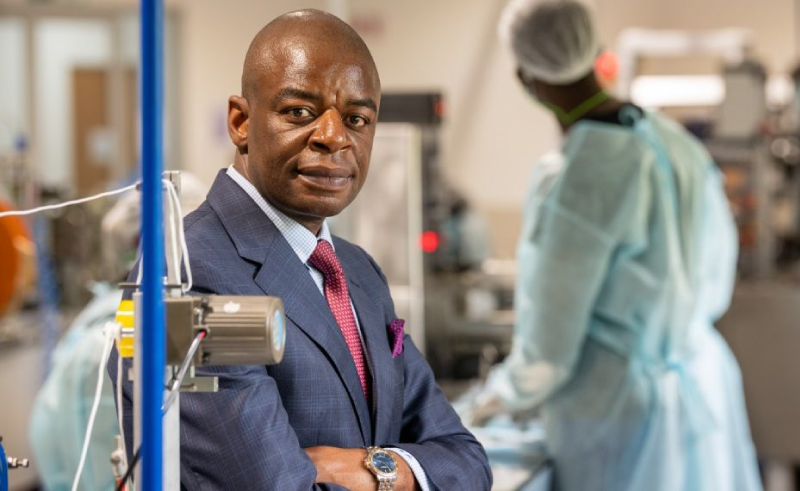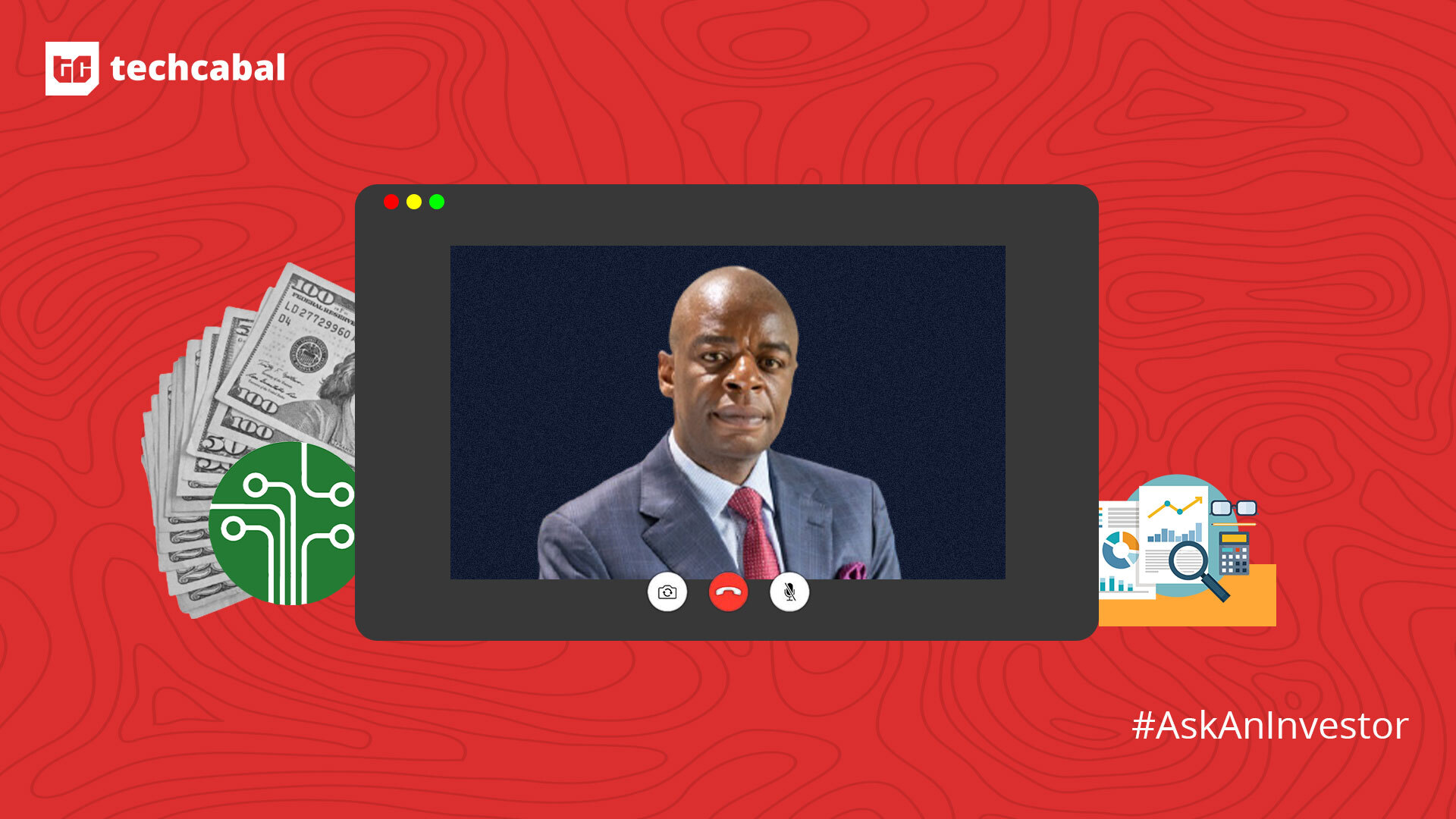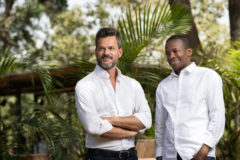By the age of ten, Adam Molai had learnt that the only way to have his own money was to engage in trading.
He grew up spending his holidays working in his father’s supermarket in Zimbabwe. It was through this experience that he learnt the fundamental principle of business: demand and supply. Selling items he bought from his father’s supermarket at a higher price in a different part of the town meant he always had money.
Years later after obtaining a degree in business from Lakehead University in Canada he returned to Zimbabwe to start the Pacific Cigarette company (formerly Savannah Tobacco). His company went on to break the monopoly that British American Tobacco had in Southern Africa. So far the Pacific Cigarette company has directly created over 250 jobs and contributed to about $100m worth of tobacco exports from Zimbabwe, Africa’s largest producer and exporter of tobacco.
In 2000, Molai started investing in other African companies through TRT Investments. Last year, he started the $2-million Jua Fund to provide African entrepreneurs with much-needed access to capital, mentoring, advice and networks.
Over the past 20 years, he has been investing in African startups and through Jua Fund, he has backed Kenya’s GrowAgric, Madagascar’s Jirogasy, Zimbabwe’s BRYT, Nigeria’s PowerStove and many others.
This edition of Ask an Investor is an adaptation of a TechCabal Live conversation between TechCabal’s Managing Editor Koromone Koroye and Adam Molai.
Seed funding makes up a significant portion of VC funding in Africa, between 2014 – 2020 they accounted for a third of VC funding in Africa. However, when you look at the investment size they’re mostly small cheque size deals because interest in the space is still growing amidst many challenges like lack of context about investing in African startups and poor fund management on the part of startups.
In this conversation, Adam Molai answered different questions about dealing with the challenges of early-stage investment in startups both from an investor and startup perspective.
Koromone Koroye: What do you look for when deciding who to invest in?
Adam Molai: Most importantly we look at the passion of the entrepreneur. Entrepreneurship is a tough journey that tests you in ways you never imagined. Unless you’re truly passionate about the project, the likelihood of staying through the project is little.
We look at their knowledge of the business, from a macro and micro perspective. Do they know who the current players are? How can their product come in and create a blue ocean in this industry? Ultimately, if you’re not differentiated you’re not competitive.
How deeply have they thought through their implementation because every idea is a great idea but it’s how you implement it. Have they gone beyond the what and gotten into answering how they ensure they see this project through? They need to know who is going to do what and what skills they need to see this project through, also when and how they plan to get the skills.
KK: How can policy makers improve the landscape for entrepreneurs?
AM: Our landscape on the continent hasn’t yet evolved to embrace us as Africans and our ideas. Rather it has developed to support foreign direct investments — foreigners coming to invest in our environment, not enough is being done to develop a framework that’s aligned with local investors. My advice is to start looking at what the needs of local investors and foreign investors are. They need to lower the bar for local investors in terms of taxation and other incentives.
We need to have more confidence in our own people. One of the challenges local investors have is that regulators are familiar with them. They look at them and say, ‘look at this young lad, I know him, he grew up in my village or town,’ so already they’ve minimized what you’re presenting and already they’re not taking you seriously. I think we need to take out some of the prejudices and stop seeing investors from a different environment or background as better.
I think we need to start with the right mindset, then level the playing field for local and foreign investors. We should do this first before working on a framework that favours all.
KK: What are some common misconceptions around early-stage investing in Africa and how they limit the opportunities available to startups
AM: We don’t look too far as entrepreneurs. Often we go conventional for example in the type of funding available. There’s not enough work being done by entrepreneurs to look for alternative sources of funding. VC is still developing in Africa, if you look at 2020 alone, there was a 44% increase in tech rounds on the continent and there was a reduction in the total funding (from $2.2b in 2019 to $1.43b). That’s $1.43b that very few of our local entrepreneurs are aware of.
When we launched the Jua fund, within a month we had 700 applicants that came from the continent. Yes, 700 sounds significant, but compared to the number of people in need of funding, it doesn’t look like people are out there hunting for funding. We need to move away from convention and encourage entrepreneurs and look at who is coming in with new sources of capital and how do we access these sources of capital.
KK: How can African companies on the radar increase their prospects of attracting funding?
AM: It starts with initiatives like the Jua fund, remember foreigners would take a cue from locals, so if foreigners see us as local investors showing confidence in our people then they’ll come along as co-investors. One of the common issues foreign investors face is that they don’t understand the African landscape. So if they see me as Adam, an African investing fellow Africans, they’re more willing to come alongside me, knowing that I have a better understanding and knowledge of the African landscape.
So the more Africans we can get investing in the continent and entrepreneurs the more foreigners we’re going to start attracting.
KK: What has been your experience in funding early-stage startups and what are the best practices startups should adopt?
AM: Let’s start from the end. When startups start the application process they should be looking at what the due diligence requirements are. They should be thinking of the requirements that they need to fulfil upon successfully obtaining the fund.
What I’ve seen is that there’s often a lack of belief that they’ll get the fund, so they go in, try to get the funds, then look for what’s required of them to comply. I think they should be looking at it in totality. Startups should think like this: I’m going to get the fund and because I’ll get the fund what should I put in place to enable me get the fund. What happens when they don’t think like this is that for some it takes months before accessing the funds. They need the funds, the funds are there for them, but they can’t access the funds because they’ve not fulfilled the due diligence process.
It’s important that when pitches are being done, there’s truthfulness in the submission. What you don’t want is to go through a tough competition and then suddenly you can’t raise funds because you’ve been flagged as not being credible. I think it’s important to state the difference between what’s available in the present and what’ll be available in the future.

KK: What are some common mistakes investors make in selecting which startups to fund?
AM: All that glitters is not gold. Investors often fall for presentation bias, some people are fantastic at presenting, others are not great at presenting but have a solid business. Over time investors have to be able to differentiate the substance from the hot air. Often because you’re looking for passion, it’s very easy to confuse passion for great presentation skills. We’ve got to be able to separate the two. Investors need to develop a lens to differentiate the presentation and substance. Most times investors only note the lack of substance when they start going into deeper interrogation of the project, this is something that they could have picked up early on without the presentation bias.
KK: For early-stage entrepreneurs what other challenges do you think they face outside funding?
AM: We need to start walking the entrepreneurs from the stage of developing the ideas to turning it into a business. Also educating entrepreneurs to look at the problems they’re solving using multiple lenses and thinking of different use cases for their solutions.
For example, there was an entrepreneur who sold computers that are solar powered but what we saw that was bigger than the solar panel computers was that each of these panels could serve as a base station for a very rudimentary cell network that has long distances.
In another scenario, there was a company that was producing Soy milk, which had no idea of how to increase its sales volumes. They then did some research and found that it helps reduce the strong pungent smells that come from some of the African food we eat. With this alternative use, they were better able to market their product and increased their sales volume.
Early-stage entrepreneurs should be thinking of how they can find alternative use cases so that as they’re marketing their product they’re finding multiple use cases and revenue streams.
Audience: How can upcoming businesses thrive in an environment where the only lenders are short term lenders?
AM: I’m always reticent when it comes to short term funding because one of the most basic tenets of finance is what we call the matching principle. In this case, it has to do with matching the tenure of your requirements with the tenure of the financing that you seek. To seek short term funding for a long term project is like seeking short term funding to buy a house. If you get a short term funding how do you meet repayments? It means you’re damned before you start.
I believe for short term financing to work you need to have already negotiated that upon hitting some milestones,once you meet the short term condition you’ll have access to long term funding.
Only in that case will I advise people to use short term funding, because their next level of funding has been fully assured, not promised or probable.
Audience: How does a company balance timing between the transition from proof of concept to fundraising?
AM: I think the right time is when you’ve stress-tested your concept so that when you’re approaching those people, you won’t be approaching them as if you’re coming to present a half baked product.
There are fewer things investors frown upon like someone who has walked two steps for a ten-step journey. There are certain minimums that should be there. You need to be sure that you’ve stress-tested it from multiple angles and that it’s robust enough.
Audience: What is needed to change the landscape to accommodate bleeding edge technologies like quantum biotech and cleantech?
AM: Right now, we invested $1m through the Jua fund into a big data supply chain entity. What did I know about big data and supply chains? What did our peers know about it? Very little. We took the leap because of the way the project was fully researched, thought through. They were very clear about the next steps they’ll take to see it through. We took that leap of faith because the work has been done. As an investor, we don’t need to fully understand. I remember telling them, I don’t understand your business but I love it.
The concept and solution being presented were so clear that it was meeting a pain point that was in the market.
Audience: Are investors keen and willing to embrace impact entrepreneurs?
AM: Yes they are, what we’re looking for are businesses that offer maximum impact for the continent. It can start in one industry but scale-out for other industries.
Recently, I was speaking to an impact entrepreneur we’ve backed with about $250k in. They built zero-emission cooking pallets and are selling carbon credits. Their solution solves the pollution and deforestation because people are cutting down trees to get wood for cooking
Audience: What’s the roadmap for the due diligence process for startups registered in different countries ?
AM: We see this a lot in tech, a lot of people go register in Delaware, then when they come and pitch to investors they come as a Nigerian company. Now expect that that company’s due diligence would be done like that of a Nigerian company. Often only after further investigation do we notice that it’s actually registered in Delaware, so we start asking for due diligence requirements for Delaware entities.
I’m just giving you a basic example of some due diligence issues that come up. There have been instances where the location of the founders is different from the location of the business. We’re looking at the fact that you as the founder have to be on the ground running that business. How would you do that? There has to be some congruence with all your facts stated about your business?
Now granted, sometimes companies need to have dual locations, for example, you’re a fintech Nigerian company that’s also registered in the United States.
Here’s what you need to do. you need to give a schematic that shows your company’s architecture explaining why it’s the way it is. What we don’t want to do as investors is to invest in one entity not knowing that there are four entities. In some cases, the one you’re investing in does all the spending, while the ones you haven’t invested in generate all the profit. We need to be sure that the entire architecture is tied together.
Audience: What’s a startup you invested in but initially doubted in, how were you able to overcome this?
AM: The ones that I can talk about aren’t within the Jua Fund, because we only started dispersing funds two months ago. There was one instance where we couldn’t fully understand a founder who approached us with an idea for a restaurant business. It was one of those moments where you say it’s not a big investment, let’s give them the benefit of the doubt. I’ve never been in the food industry and we said let’s go for it.
What we saw after investing and the evolution of the business was that, had it not been for COVID I believe they would have been able to roll it out as a franchise,
Audience: How many milestones should a startup cross before approaching startups?
AM: I’ve always said the more data points that are available and presented, the stronger the picture you present. So my advice is to get as much done as is feasible without having to invest significant resources.





















